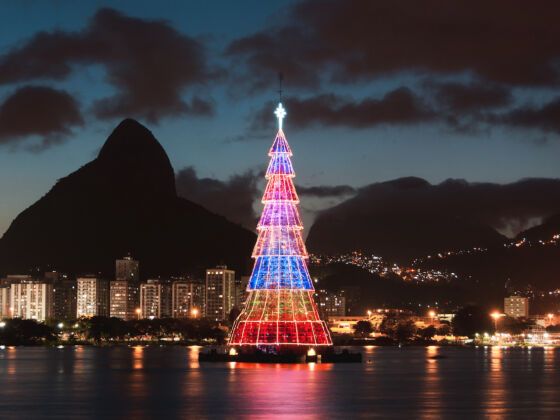Christmastime all over South America seems to emulate ideas from the Northern Hemisphere holiday. Rich families decorate their houses just like a vintage Coca-Cola ad, socks are hung over fireplaces devoid of fires, and artificial snow is painted all over the place.
Decoration is the key, whether you’re rich or poor. Unlike the Christmas trees from Hollywood films, families use plastic ones that are supposed to be replaced once every seven years (in Argentina it’s bad luck if you don’t!).
